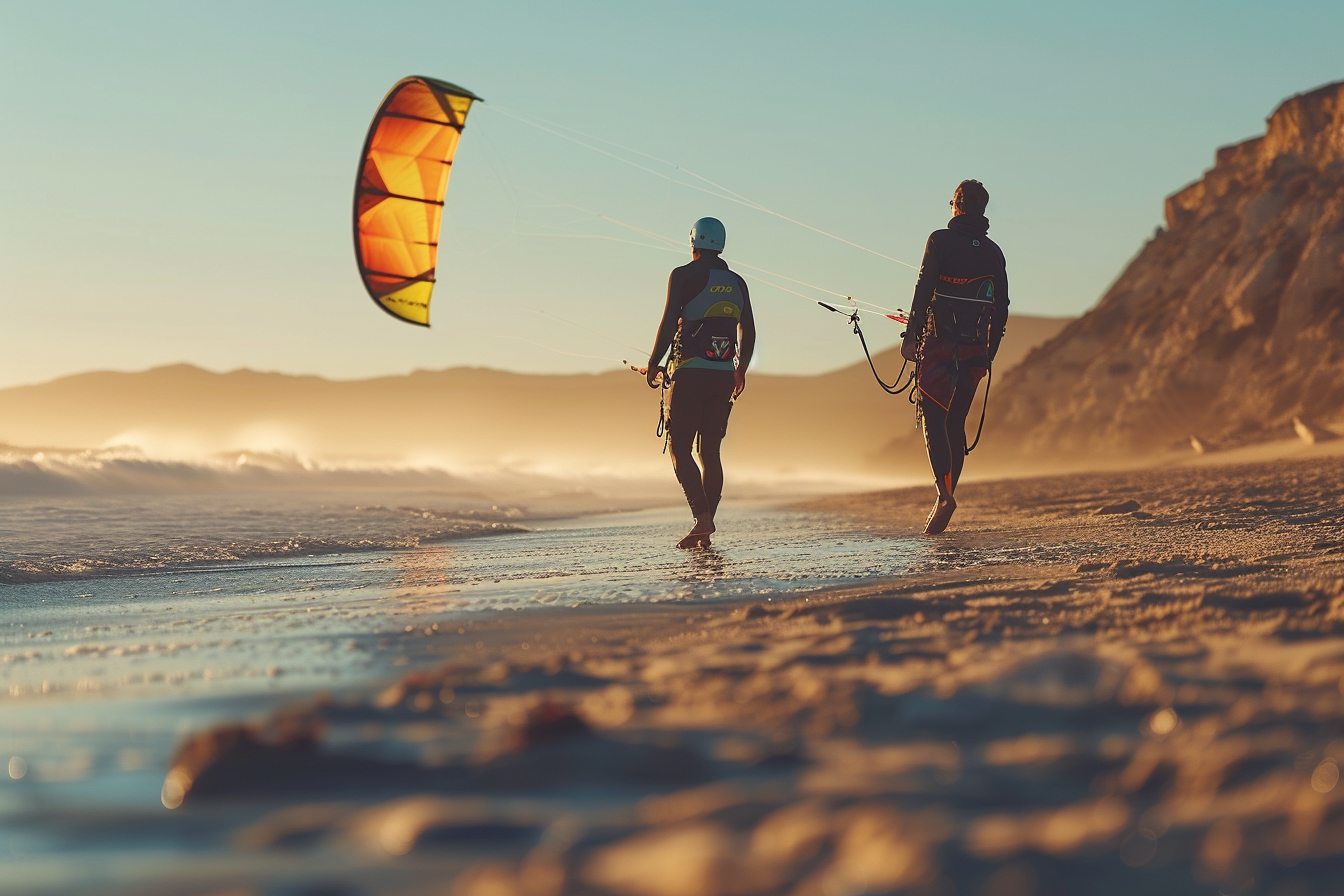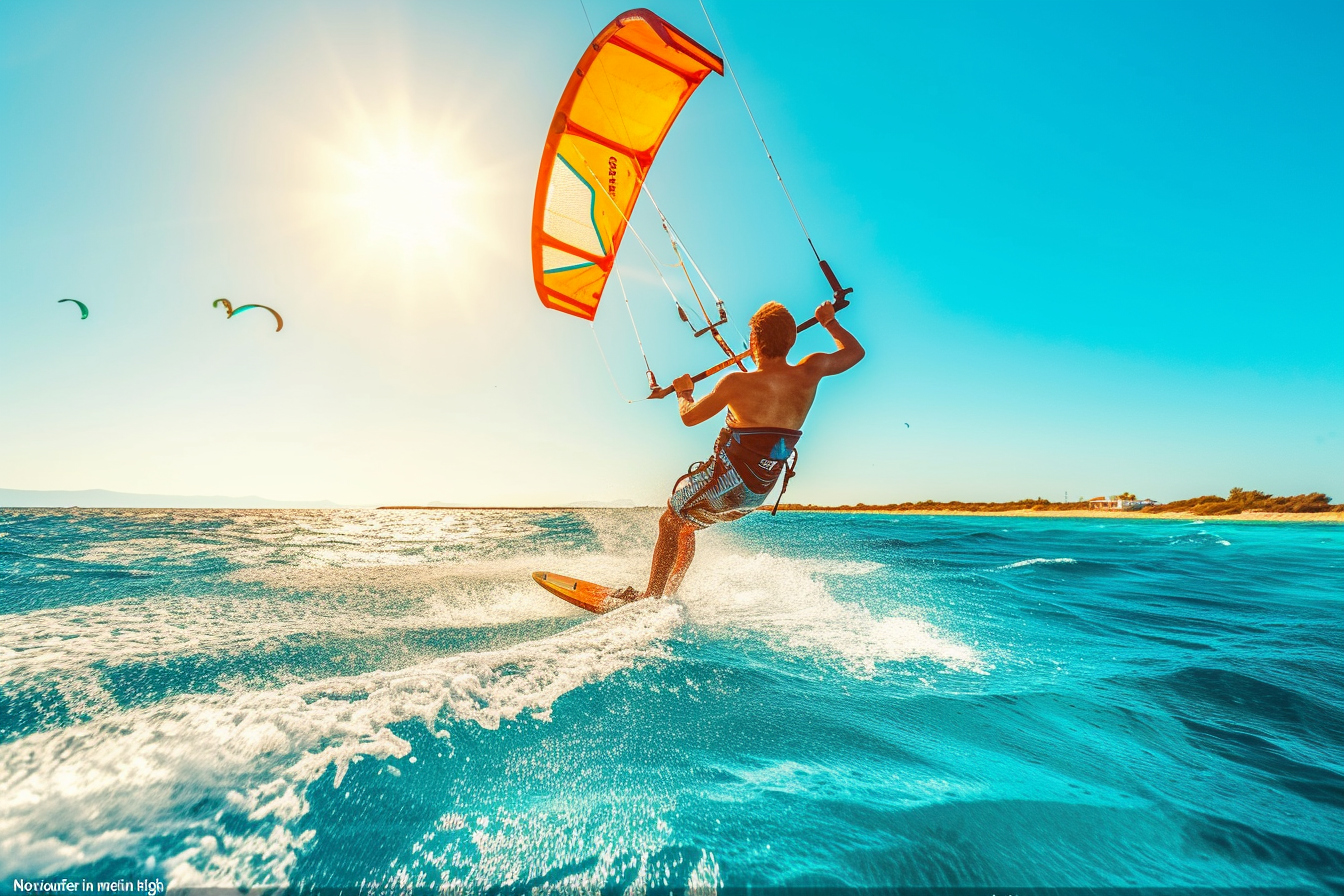Kitesurfing, the exhilarating water sport that harnesses the power of the wind to glide across the ocean, is garnering immense popularity. If you have been captivated by the sights of colorful kites against the backdrop of the blue sky and are itching to get your feet wet in this dynamic activity, you’re in the right place. Getting started with kitesurfing can feel like a daunting task, but with the right guidance and a sprinkle of determination, you’ll soon be carving through the waves. Here are some essential tips to make your transition from spectator to participant as smooth and enjoyable as possible.
Understand the basics
Kitesurfing, also known as kiteboarding, combines aspects of wakeboarding, windsurfing, paragliding, and gymnastics into one extreme sport. A kite surfer harnesses the wind’s power with a large controllable kite to be propelled across the water on a small surfboard or kiteboard.
Choose the right training program

Investing in proper training is the keystone to a safe and successful kitesurfing journey. Certified instructors offer invaluable knowledge and insights that you simply cannot obtain from online tutorials or friends. They will teach you not only how to handle the kite but also essential safety measures, which could one day save your life or that of your fellow kitesurfers.
Master the wind window concept
The wind window is the three-dimensional area downwind of the pilot where the kite can fly. It’s an invisible dome-shaped area and understanding its dynamics is a fundamental aspect of kitesurfing. Picture the face of a clock in front of you, with the kite flying at the edge of this clock face. The strongest pull is felt when the kite is at 12 o’clock directly overhead, and the power diminishes as the kite moves towards the wind window’s edge at 9 o’clock or 3 o’clock.
Equipment essentials
Invest in quality gear suited to beginners – it makes a difference. While selecting equipment might not be straightforward, the key items you need include:
- Kite: Beginners should opt for a kite known for its stability and ease of control, such as an SLE (Supported Leading Edge) type.
- Kiteboard: Start with a larger and wider board that offers more stability.
- Harness: It’s pivotal for connecting you to the kite, and a comfortable, supportive harness is key.
- Wetsuit: This depends on your location’s water temperature. You’ll want to be comfortable and warm.
- Safety Gear: A good helmet and an impact vest can prevent serious injuries.
Kite control
Before you hit the water, land-based training is essential. Perfecting kite control on land saves you numerous potential mishaps at sea. Learn to launch the kite, understand its zones of power, and practice controlled flying, steering, and landing – all on solid ground.
Body dragging
Once you’ve got a feel of controlling the kite, next up is body dragging – being pulled through the water by the kite without the board. It’s an exhilarating stepping stone towards actual riding and it enables you to practice water starts and kite relaunching in water. Moreover, you learn how to maneuver and generate power using the kite.
Water starts and board skills
Stepping onto the board is a pivotal moment. Water starts demand patience and coordination. You’ll need to control the kite with one hand while positioning the board with your feet, which can be tricky. Once on the board, staying balanced becomes the next hurdle. Beginners might struggle initially, but practice will increase your muscle memory and confidence.
Riding and staying upwind
The holy grail for novice riders is staying upwind, rather than being pushed downwind with every gust. It requires synchronous control of the kite and the board, finely tuning your body position, kite angles, and board direction. Achieving consistent upwind rides is a testament to having grasped the basics of kitesurfing.
Right-Of-Way rules
Learning the right-of-way rules is as critical as any physical skill. These rules ensure everyone’s safety on the water. They dictate who has priority on the water and help avoid accidents. Some basics include giving way to the rider coming upwind and the rider surfing on a starboard tack (right hand forward) has priority over the rider on a port tack (left hand forward).
Weather and site assessment
Kitesurfing relies heavily on weather conditions. Strong, stable winds are a must-have, but recognizing the different wind types and their associated dangers is equally vital. Moreover, a thorough site assessment to identify potential hazards should be routine before every session.
Build physical fitness and flexibility
A successful kitesurfer needs physical stamina, strength, and flexibility. Endurance sports like swimming, running, and cycling can enhance your cardiovascular fitness. Strength training, especially focusing on the core and the upper body, can give you better control over the kite. Flexibility gained through practices like yoga can make it easier to recover from falls and avoid injuries.
Keep respect for the privilege of the sport
Kitesurfing is not a solitary endeavor, but a community activity that often takes place in shared spaces. Respect for fellow riders, beachgoers, the local community, and the environment should underline your approach to the sport. Ethical practices like obeying local regulations and caring for your surroundings ensure that kitesurfing remains a welcome and sustainable activity.
While kitesurfing demands respect for its power and the discipline it requires, it is ultimately about the joy of harnessing the essence of the wind. Every fall, every gust, every ride adds to your palette of experience, culminating in a timeless adventure across the waves. Ethereal moments on the water await as you become one with the air currents—a beginner no more, but a rider of the wind.


Leave a Reply